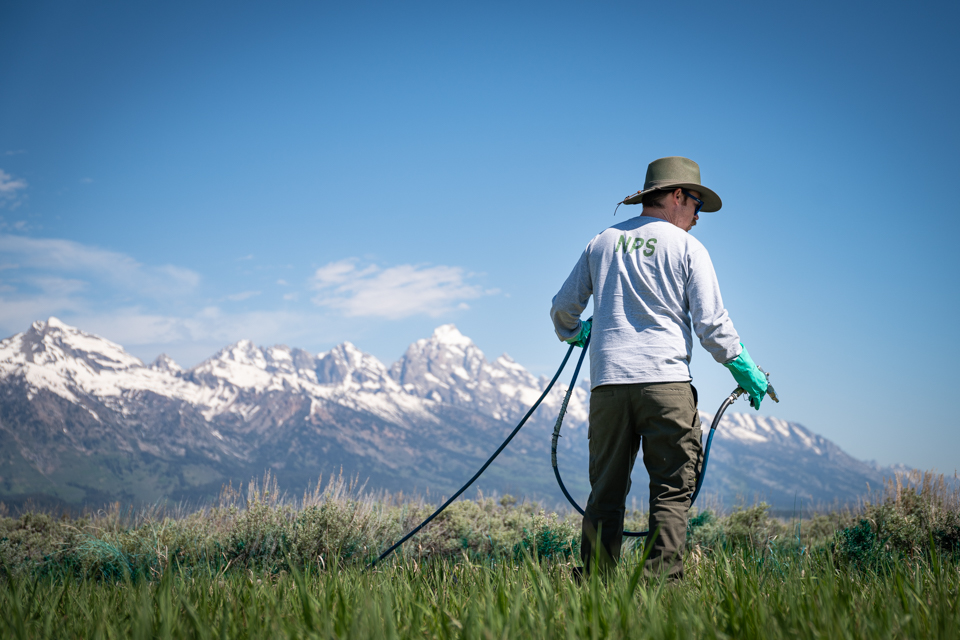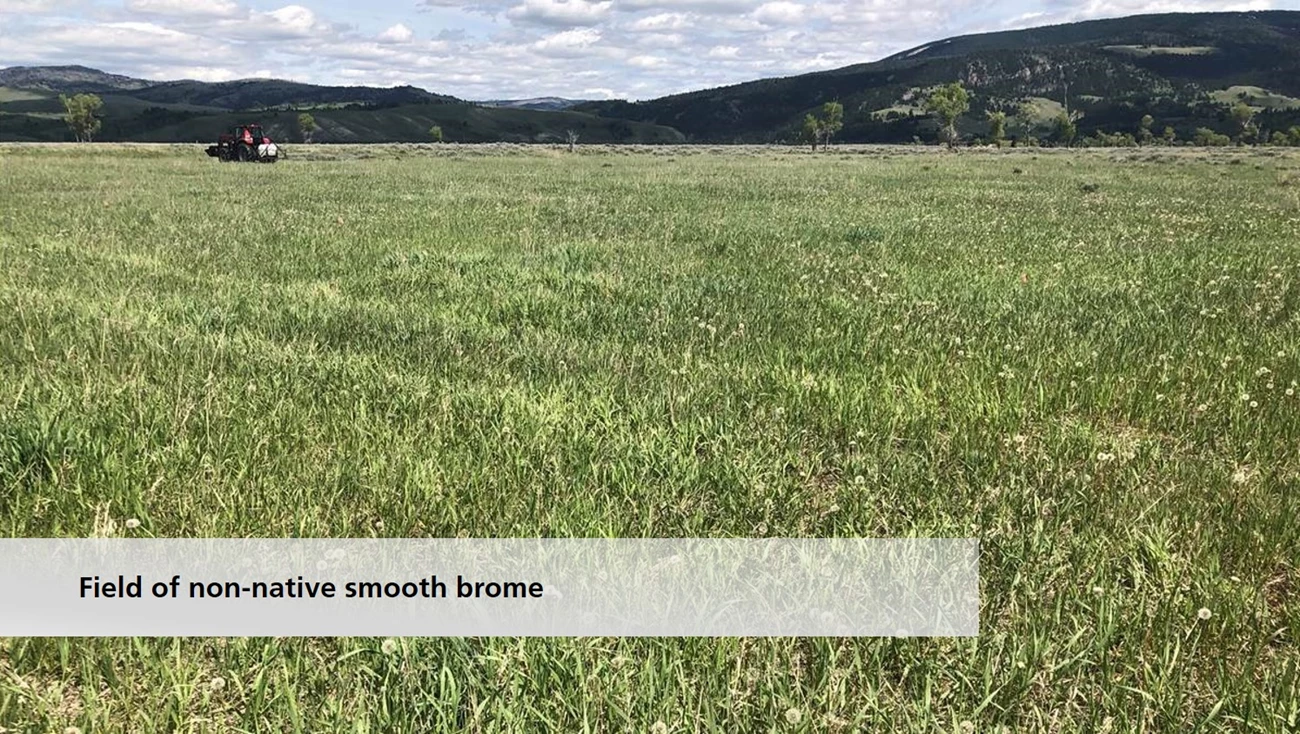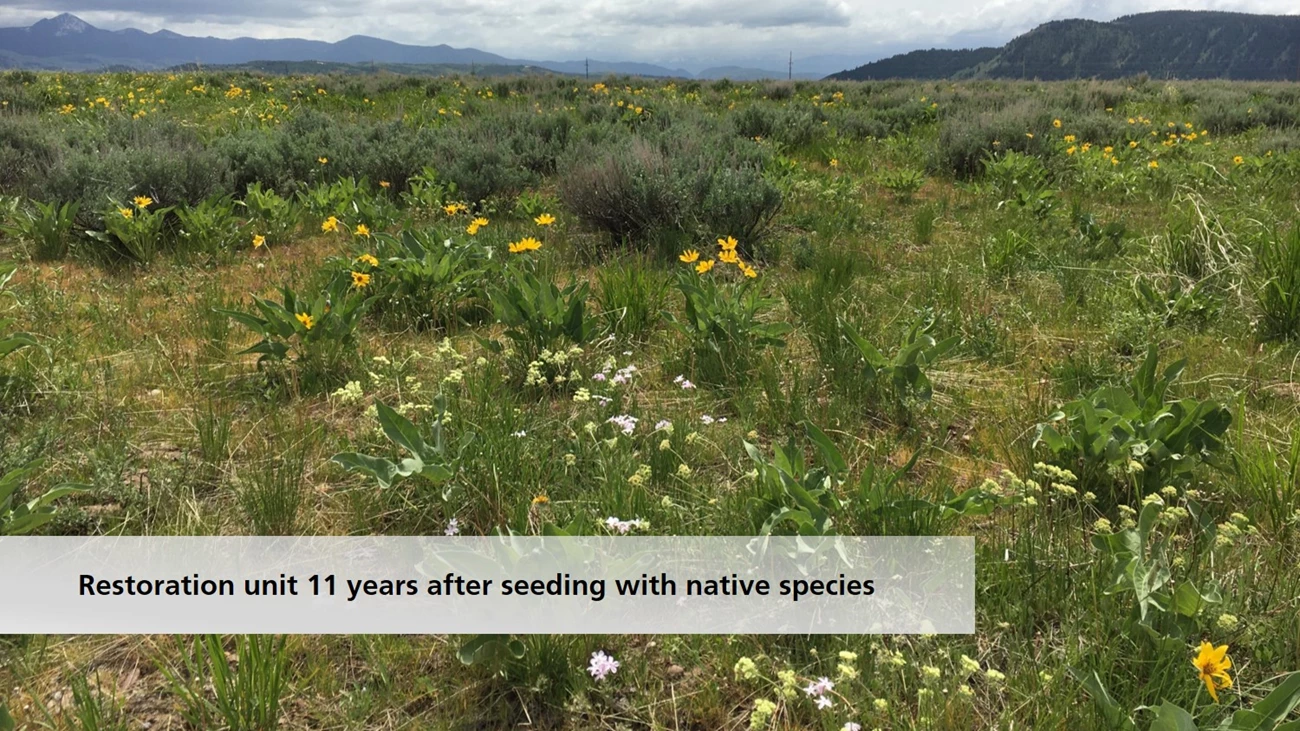News Release
You are viewing ARCHIVED content published online before January 20, 2025.
Please note that this content is NOT UPDATED, and links may not work. For current information,
visit https://www.nps.gov/aboutus/news/index.htm.

NPS Photo/C. Adams
|
Subscribe
|
Contact: Denise Germann, 307.739.3393
Contact: C.J. Adams, 307.739.3431
Grand Teton National Park staff have initiated habitat restoration projects in the southern part of the park. The work is part of a multi-phase restoration effort to replace approximately 4,500 acres of former non-native grass fields with native sagebrush steppe habitat. A healthy sagebrush ecosystem in Grand Teton is vital for the diversity and abundance of native plants and wildlife species like elk, bison, moose, pronghorn, and sage grouse that rely on them. Through the support of the Grand Teton National Park Foundation, the park has worked to return these pastures to their former, native glory.Beginning in the late 1800s, Jackson Hole homesteaders converted large swaths of local sagebrush steppe habitat to hayfields for agricultural use. The smooth brome they planted provided their livestock with nutrition year-round as the hay could be stored for winter use. Since this time, the homesteaders have moved away from Antelope Flats and other areas of Grand Teton. However, the converted pastures have persisted, decreasing the value to wildlife in the heart of year-round habitation and migration corridors.
Since 2007, Grand Teton park staff, through the support of the Grand Teton National Park Foundation, have worked to return these pastures to their native sagebrush steppe habitat. This is a long-term project and successful restoration of these areas takes years to complete. To date, 1,320 acres are in various stages of restoration, with areas furthest along containing diverse, well-established native plants that provide a source of food and shelter for a wide range of pollinators and wildlife. Wildflowers, sagebrush, and other native plants can now be seen in these locations.
In June, park staff from Vegetation Ecology and Management at Grand Teton initiated restoration on 110 more acres of former hayfields. During this operation, staff applied herbicide to remove non-native pasture grass at two different locations.
The first of these sites, 90 acres located in the South Slough unit west of Mormon Row, is part of the Antelope Flats sagebrush habitat restoration called for in the 2007 Elk and Bison Management Plan.
The second site where restoration work has taken place is 20 acres located in the McBride unit south of the Jackson Hole Airport and east of North Spring Gulch Road. This project specifically aims to restore sage grouse habitat.
During restoration operations, park staff apply herbicide by tractor, UTV, and backpack sprayers. The application results in dead vegetation and bare ground. When non-native grass has been successfully removed, park staff will seed with a mix of native grasses, shrubs and forbs (wildflowers).
Below you can see before and after photos of restoration work initiated in Grand Teton.

NPS Photo

NPS Photo
Last updated: July 15, 2021
